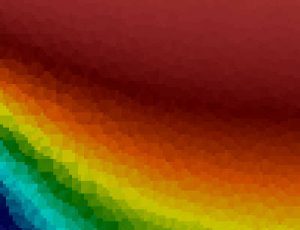Allahverdi N., Pozo A., Zuazua E. Numerical aspects of large-time optimal control of Burgers equation ESAIM-MATH MODEL NUM. Vol. 50. No. 5 (2016). DOI: 10.1051/m2an/2015076
Abstract: In this paper, we discuss the efficiency of various numerical methods for the inverse design of the Burgers equation, both in the viscous and in the inviscid case, in long time-horizons. Roughly, the problem consists in, given a final desired target, to identify the initial datum that leads to it along the Burgers dynamics. This constitutes an ill-posed backward problem. We highlight the importance of employing a proper discretization scheme in the numerical approximation of the equation under consideration to obtain an accurate approximation of the optimal control problem. Convergence in the classical sense of numerical analysis does not suffice since numerical schemes can alter the dynamics of the underlying continuous system in long time intervals. As we shall see, this may end up affecting the efficiency on the numerical approximation of the inverse design, that could be polluted by spurious high frequency numerical oscillations. To illustrate this, two well-known numerical schemes are employed: the modified Lax−Friedrichs scheme (MLF) and the Engquist−Osher (EO) one. It is by now well-known that the MLF scheme, as time tends to infinity, leads to asymptotic profiles with an excess of viscosity, while EO captures the correct asymptotic dynamics. We solve the inverse design problem by means of a gradient descent method and show that EO performs robustly, reaching efficiently a good approximation of the minimizer, while MLF shows a very strong sensitivity to the selection of cell and time-step sizes, due to excess of numerical viscosity. The achieved numerical results are confirmed by numerical experiments run with the open source nonlinear optimization package (IPOPT).


